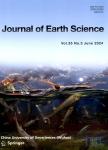Rock joint detection from borehole imaging logs using a convolutional neural networks model
作者机构:Faculty of Engineering, China University of Geosciences Hunan Earthquake Agency Badong National Observation and Research Station of Geohazards, China University of Geosciences Research Institute of Transmission and Transformation Projects, China Electric Power Research Institute Co., Ltd, State Grid Corporation of China
出 版 物:《Journal of Earth Science》 (地球科学学刊)
年 卷 期:2024年
核心收录:
学科分类:081801[工学-矿产普查与勘探] 081802[工学-地球探测与信息技术] 08[工学] 0818[工学-地质资源与地质工程] 081601[工学-大地测量学与测量工程] 0816[工学-测绘科学与技术]
基 金:supported by the National Key R&D Program of China (No. 2023YFC3081200) the National Natural Science Foundation of China (No. 42077264)
摘 要:To map the rock joints in the underground rock mass, a method was proposed to semi-automatically detect the rock joints from borehole imaging logs using a deep learning algorithm. First, 450 images containing rock joints were selected from borehole ZKZ01 in the Rumei hydropower station. These images were labeled to establish ground truth which was subdivided into training, validation, and testing data. Second, the YOLO v2 model with optimal parameter settings was constructed. Third, the training and validation data were used for model training, while the test data was used to generate the Precision-Recall curve for prediction evaluation. Fourth, the trained model was applied to a new borehole ZKZ02 to verify the feasibility of the model. There were 12 rock joints detected from the selected images in borehole ZKZ02 and four geometric parameters for each rock joint were determined by sinusoidal curve fitting. The average precision of the trained model reached 0.87.



